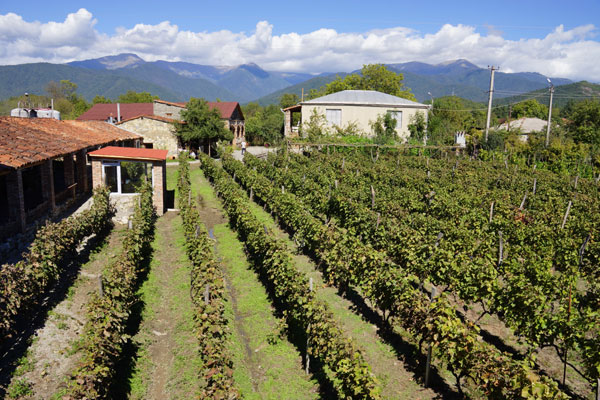A Vintage rebirth
Updated: 2013-03-11 10:05
By Ye Jun (China Daily)
|
||||||||
 |
|
Kopala restaurant offers a good view and good food. The food of Georgia is simple, natural and delicious. Photos by Ye Jun / China Daily |
 |
|
In the Georgian wineries, visitors see wines being made with both modern and traditional methods. |
Tucked in the Caucasus is an ancient tradition of wine making. Ye Jun sips across the sweet spots of Georgia.
Georgia is a country where humans first discovered the art of winemaking. One of the historic cradles of wine in the world, the country is revitalizing its viticulture and other traditions. A team of six journalists was invited by the Georgian Wine Agency recently to visit the vineyard regions of the country. At the airport, we are surprised and pleased to receive a small bottle of wine in a box that was labeled: "Welcome to the land of 8,000 vintages." The back of the box says the winemaking tradition of Georgia has "passed through generations for over 8,000 years".
Coming from a country with a 5,000-year-old civilization, we Chinese journalists are curious.
The Georgian National Museum displays a big clay wine jar from the 4th century BC excavated in the city of Mtskheta, in which people found remains of wine grapes.
Archaeologists trace the history of Georgian viticulture to at least 6,000 BC, when people of South Caucasus found that wild grape juice turned into wine when it is buried through the winter in a shallow pit. From 4,000 BC Georgians were cultivating grapes and burying clay vessels to make wine.
China is Georgia's seventh biggest wine importer, bringing in 583,000 bottles in 2011. Sales of Georgian wine has grown so rapidly in China that it is now considered a major target market.
Our group of journalists and beverage-industry professionals see wines being made here with both modern and traditional methods. Some of the wineries and wine cellars we visit have been rebuilt in the past 10 years, as demand and promotion of these vintages have grown.
Georgia is famous for a traditional wine made in a qvevri, a clay jar buried in the ground, covered with a stone lid.
In the beginning, the juice produced by crushed grapes in the underground qvevri tastes very much like condensed grape juice. But after the fermentation process, it becomes a natural but powerful wine, with an enticing golden color.

 'Taken 2' grabs movie box office crown
'Taken 2' grabs movie box office crown
 Rihanna's 'Diamonds' tops UK pop chart
Rihanna's 'Diamonds' tops UK pop chart
 Fans get look at vintage Rolling Stones
Fans get look at vintage Rolling Stones
 Celebrities attend Power of Women event
Celebrities attend Power of Women event
 Ang Lee breaks 'every rule' to make unlikely new Life of Pi film
Ang Lee breaks 'every rule' to make unlikely new Life of Pi film
 Rihanna almost thrown out of nightclub
Rihanna almost thrown out of nightclub
 'Dark Knight' wins weekend box office
'Dark Knight' wins weekend box office
 'Total Recall' stars gather in Beverly Hills
'Total Recall' stars gather in Beverly Hills
Most Viewed
Editor's Picks

|

|

|

|

|

|
Today's Top News
Boston bombing suspect reported cornered on boat
7.0-magnitude quake hits Sichuan
Cross-talk artist helps to spread the word
'Green' awareness levels drop in Beijing
Palace Museum spruces up
First couple on Time's list of most influential
H7N9 flu transmission studied
Trading channels 'need to broaden'
US Weekly

|

|








